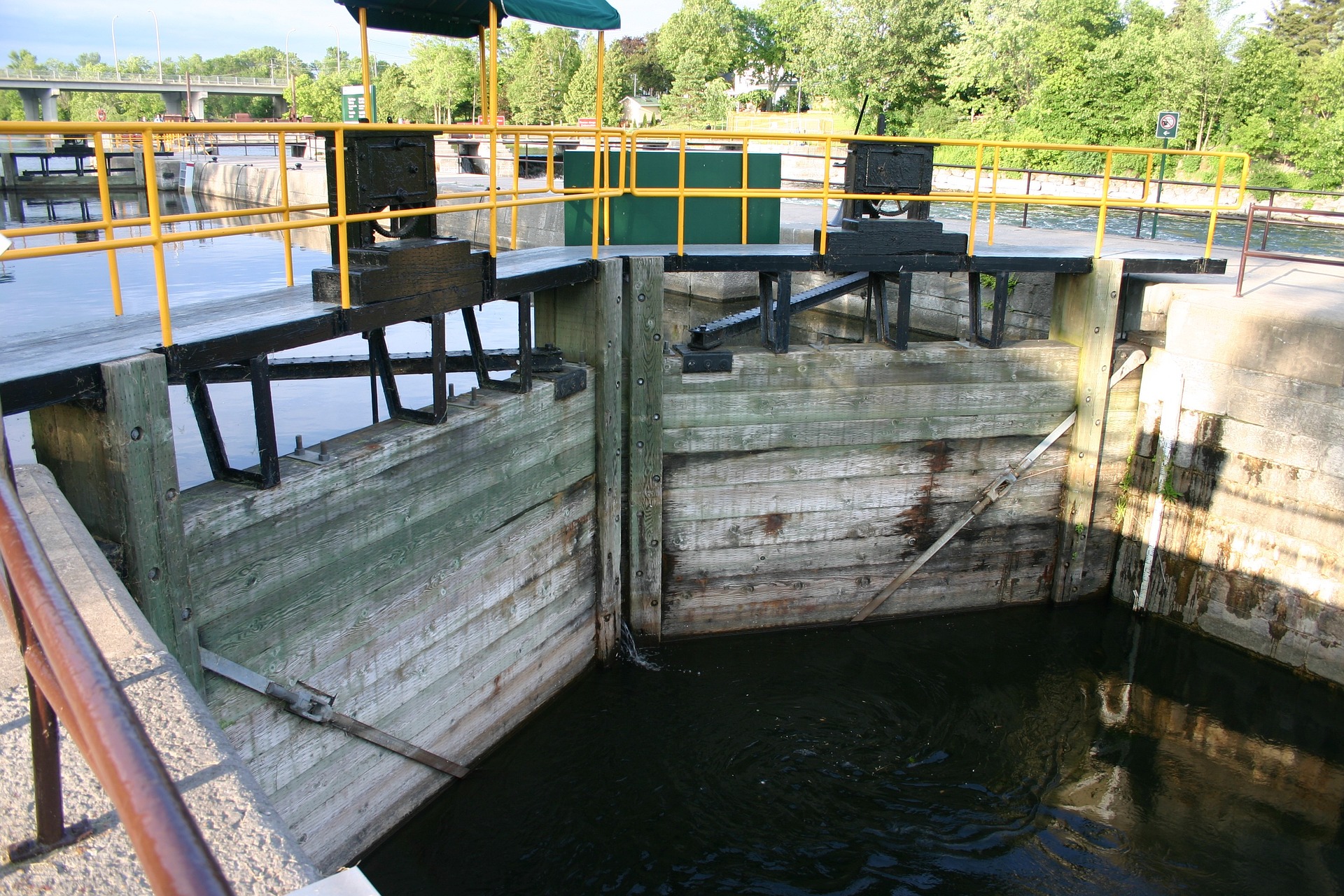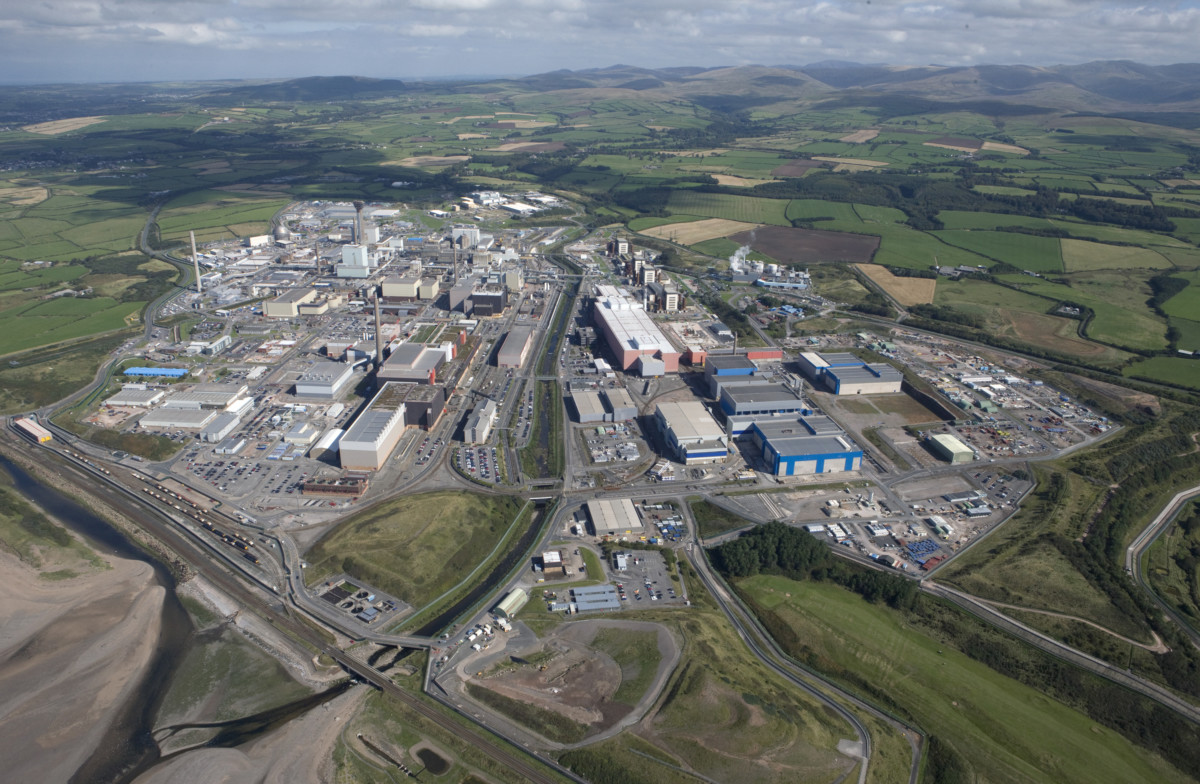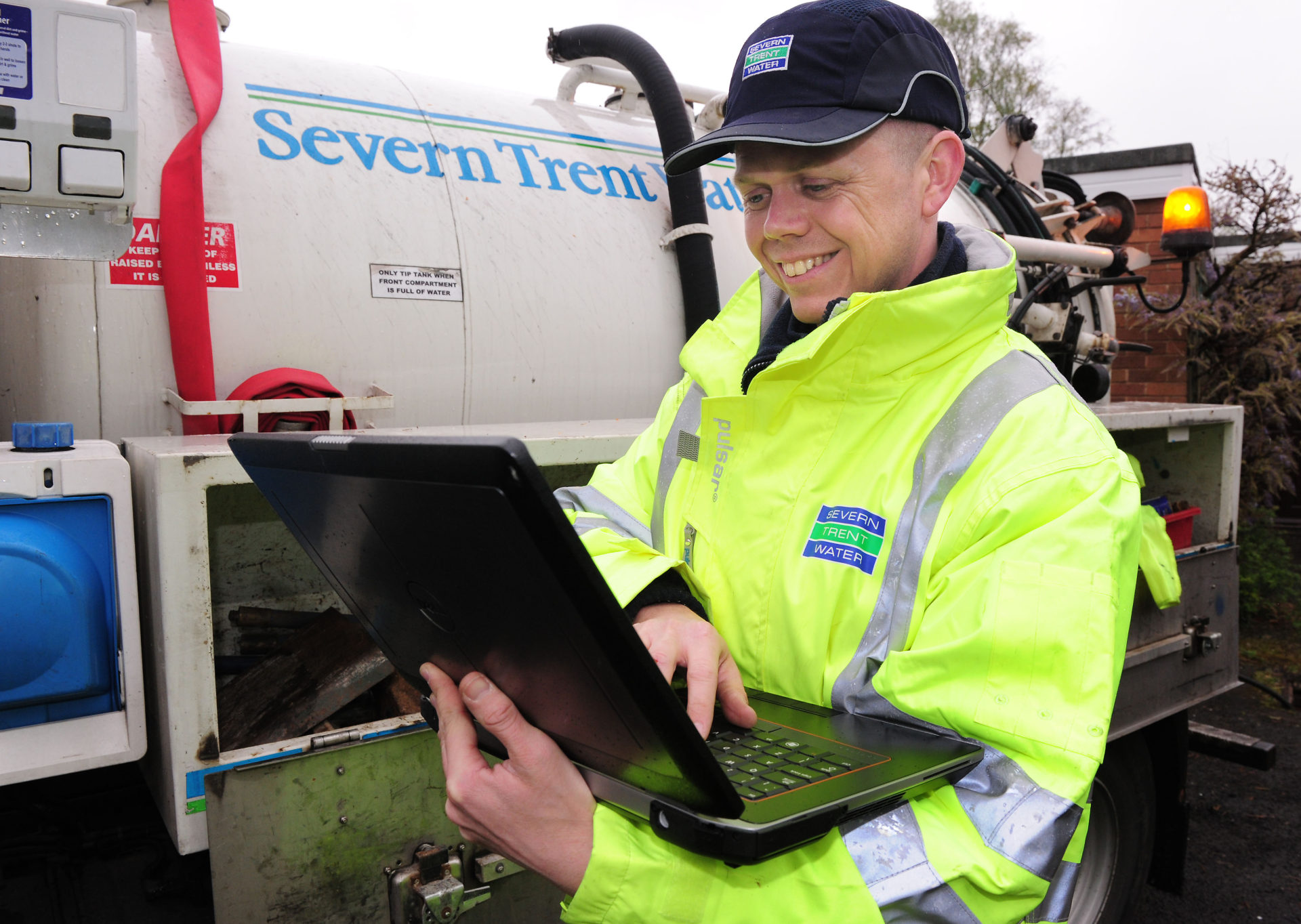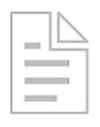Blog Archives
Post navigation

Worcestershire County Council
Custom-made web mapping services drives innovation across the council, delivering better services for citizens in a more cost effective way.
In the rural county of Worcestershire, Esri’s ArcGIS platform is used extensively to help deliver better services for citizens, in the most cost-effective way. The council uses custom-made web mapping services to deliver specific GIS-based solutions to multiple internal departments, as well as partners and the general public.
The Customer
Worcestershire is a predominantly rural county in the West Midlands. The county council formed the Worcestershire Hub in partnership with its six district councils, as the first point of contact for council services.
One award-winning GIS-based solution, Encompass, enables the council to work more efficiently in the management of rights of way
ArcGIS has been used to create a map of heat loss in the county, which helps educate citizens about the importance of insulation and informs fuel poverty measures
Another GIS-based initiative, Total Place, helps the local authority to work more cohesively with voluntary organisations across the county
The Challenge
The council wanted new and innovative ways to work with partner agencies, councils and the public, to deliver better services in a cost-effective way.
We wanted to see how we could make better use of our collective properties
Hayley Miles – Land Terrier Officer
The Solution
Geography is the common denominator of council activities, so a central database now stores Geographical Information System (GIS) data that is used in the back office systems and custom-made web pages that underpin many projects: The 3,000 miles of footpaths, bridleways and byways were managed by separate teams. “Some used spreadsheets; others used a database. It was very difficult to get a single view of all rights of way information”, observes Philippa Jaine, Countryside Access GIS Management Officer. A new back office system, Encompass, now stores eight categories of data for every right of way, centrally.
Worcestershire is a pilot member of Total Place, UK-wide initiative to help local public service and voluntary organisations work more cohesively. “We wanted to see how we could make better use of our collective properties”, says Hayley Miles, Land Terrier Officer. Data from Total Place stakeholders was uploaded into the GIS. “We then worked with our GIS team to create a simple, secure web interface to this data, which each of our partners could access.”
“Warmer Worcestershire” was launched to tackle fuel poverty by enabling residents to see how much heat their property is losing. “Our GIS team created the map by overlaying a thermal night-time image of the county onto an Ordnance Survey map”, says Heather Lammas, Assistant Sustainability Officer.
The council had been accessing social care information as tables and lists from its Frameworki database, but it was difficult to cross reference this data and make decisions quickly in emergencies. The GIS team created an interface between Frameworki and its GIS. Individuals with care needs are now shown on an interactive, printable, map that is used to co-ordinate multi-agency responses.
I think the sheer variety of GIS-enabled projects we are working on at the council is testament to our belief in Esri technology and the benefits it can have in terms of public service delivery
Mark Smith – Worcestershire County Council’s GIS Team
The Benefits
The council works closely with districts to use resources and deliver services more effectively, and is sharing more information with the public online.
“ArcGIS Server is very reliable for us. It also makes it very easy to develop web interfaces”, says Mark Smith of the GIS team. “All the web applications we’ve built refer to the same core set of data, which ensures no duplication and that our work is accurate… We’ve also made it possible to edit this data on the fly. So if one person makes a change, a user of another application can be sure they’re using that same, updated data.”
Developing web-based interfaces is quick, cost-effective and flexible, without the additional licensing costs of developing desktop solutions. The council shares map data with districts through Web Mapping Services (WMS): “We simply broadcast it. It allows applications and other organisations to consume our maps and data without the need for further development”, explains Smith. The benefits are impressive and award-winning:
Encompass won the 2010 Innovation and Best Practice (Local Public Services) Award from the Association for Geographic Information. “Now we can see everything that relates to a right of way in a single location”, confirms Jaine. This means “we never do something like dig up a path one month only to have to re-dig it up the next”.
With Total Place, “We’ve identified opportunities for co-location of police and fire stations”, says Miles. “And by seeing where all available training facilities are, both public and private, it’s easy to share them and save costs or improve service.”
“Warmer Worcestershire” was an instant success, with a survey showing a quarter of respondents had heard of the project, of whom 30% had then insulated their loft, 21% had cavity wall insulation and 6.5% applied for heating grants. Emergency Planning Officer Mike Warner explains that the integration between Frameworki and GIS means “We can brief the right people very quickly. We can plan how we might handle something… We’re now partnering with other councils to show them how they can create the same system that we have.”
The council is using online GIS to inform and serve the public better: Staff and residents can view and log the precise location of problems. “Thanks to GIS access via the website, council staff can focus on other tasks”, says Smith.
“My Local Area” gives a simple, web-based view of everything in a locality, including reported faults, schools, leisure facilities, and areas of environmental importance.
In 2009, the council generated a live map of election results. “This is a perfect application of GIS, as it really made election progress easy to follow”, says Smith.
Local map data is now available online, overlaying new and old data. “Some of this data is hundreds of years old”, says Smith. “Putting it online through GIS aids research into our past, and shows clearly how these locations have developed over time.”

West Coast Group
Data captured by our field surveyors automatically updates the central GIS every day, improving our vegetation management process by around 20%
Field-based surveyors at West Coast Group now use a mobile GIS solution from Esri to help them survey trees and bushes growing in close proximity to electricity cables. The automated process has improved the organisation’s efficiency by 20%, helping it to deliver a better service for its customers.
The Customer
The West Coast Group of Companies is a specialist provider of energy services based in Wales. It provides services to UK electricity network operators through an experienced team of planners, surveyors, engineers and environmental managers.
Use of ArcGIS Mobile enables field-based surveyors to spend up to one day less per week in the office and therefore complete more tree surveys
ArcGIS automatically sends completed survey reports to planners at the end of each day, so there is no longer a delay of three weeks to get reports
The organisation can now alert its customers far more quickly to issues that might impact on public safety or cause a power outage
The Challenge
Electricity network providers in the UK have a statutory duty to ensure that trees and other vegetation do not come into contact with overhead power lines. As a statutory requirement the network providers take their responsibilities extremely seriously because trees can damage electricity cables, causing power cuts and risks to public safety.
West Coast Group carries out vegetation management services on behalf of a number of UK electricity network providers. It conducts on-site surveys of over 3500 km of electricity circuits per year.
Historically planners at West Coast Group would photocopy paper maps and mark sections of power line using a highlighter pen. The company’s surveyors would then take these paper maps into the field, take photographs and manually fill in forms to indicate any vegetation that required cutting or felling. These forms were returned to the office where they were collated and keyed into the back office system to create jobs.
West Coast Group had been using geographic information system (GIS) technology elsewhere in its business for a number of years and realised that it could use GIS to simplify, automate and accelerate this process. Using Esri’s ArcGIS Server and ArcGIS for Mobile solutions, it designed and developed a sophisticated new application that has transformed the way in which it delivers vegetation management services for its clients.
We estimate that we have improved the overall efficiency of our vegetation management process by around 20%
Nathan Caley – IT Manager, West Coast Group
The Solution
Planners in West Coast Group’s offices now upload the locations of its clients’ electricity network into ArcGIS, where they are displayed on digital Ordnance Survey maps. The planners then use an electronic highlighter to mark those sections of electricity circuit that are due to be surveyed. The map sections are subsequently sent electronically to the company’s surveyors, enabling these mobile employees to no longer have to go into the office to collect their jobs lists and paper maps.
In the field, West Coast Group’s surveyors view the highlighted circuits on toughened, portable tablet computers. A workflow within a mobile GIS application then guides the surveyors through each required stage in the surveying process. They enter details on the location of trees within the vicinity of overhead power lines, calculating distances, and requirements for road closures, circuit outages, etc. Surveyors also take pictures using the tablet computers and these images are entered directly into the GIS-based reports, attached to specific locations.
At the end of each day, the surveyors synchronise their tablets with the central system, passing their GIS-based survey reports direct to the planners. Icons within the GIS solution clearly show the planners which poles and lines have been surveyed, the locations of trees requiring work, circuit outages, network resilience issues and more. Armed with this information, planners can efficiently group maintenance tasks, allocate jobs and resources to works teams.
In the past, there were often considerable differences between the reports produced by our surveyors, because different people had different styles and approaches. GIS has given us greater consistency in data captured and the criteria applied
Nathan Caley – IT Manager, West Coast Group
The Benefits
The development of this innovative GIS solution has enabled West Coast Group to save money, work more productively and deliver a far more efficient service to its clients.
Surveyors spend up to a day a week less time in the office, as they no longer have to go in to collect maps and drop off reports. The company’s administrators also save considerable amounts of time, as they no longer have to enter survey reports into the back office systems. In the past, a lot of time used to be absorbed in the office trying to match up photographs with locations, whereas now photographs are automatically assigned to the correct jobs. Nathan Caley, IT manager at West Coast Group says: “We estimate that we have improved the overall efficiency of our vegetation management process by around 20%.”
Previously planners within West Coast Group had to wait for around three weeks to receive survey reports, but they now receive them the very next day. Consequently, if trees have grown too close to the overhead power lines, they can alert the client more quickly and dispatch works teams directly to the sites. This faster response helps West Coast Group’s clients to provide a safer and more reliable service for their customers.
Use of GIS has also led to improvements in the accuracy and consistency of West Coast Group’s surveys. “In the past, there were often considerable differences between the reports produced by our surveyors, because different people had different styles and approaches,” explains Caley. “GIS has given us greater consistency in data captured and the criteria applied.”
West Coast Group believes that its use of GIS is enabling it to deliver a very high quality service to existing and new clients. “Our vegetation management solution gives us a unique selling point that other utility service providers just don’t have,” Caley says.

Saxon Weald
A number of solutions have been deployed that have significantly improved the efficiency of maintenance activities and saving £124,000 per year
This Sussex and Hampshire-based housing association has calculated that it saves at least £124,000 a year from its use of GIS. It has deployed a range of solutions from Esri UK, which have significantly improved the efficiency of its maintenance activities while presenting more incisive management information.
The Customer
Saxon Weald Homes Limited (Saxon Weald) is a housing association managing over 5,000 properties across Sussex and Hampshire. It aims to improve the quality of life for residents and manages housing for general needs, retirement and shared ownership.
Esri’s ArcGIS platform saves £60,000 a year from more accurate maintenance contracts, £40,0000 a year from improved tree works and £24,000 a year from consolidated invoicing
Saxon Weald is able to operate more efficiently, as it no longer needs to conduct as many property visits to gather information and data
ArcGIS gives the organisation more incisive management information, which it uses to help plan strategically for the future
The Challenge
When Saxon Weald became independent of the local authority, it inherited 175 land titles. Each had a grounds maintenance liability, but “we didn’t know explicitly how much ground we were responsible for, what it was and where it was… we discovered that we were routinely cutting grass that didn’t belong to us, while missing out grass that did”, explains Justin Chamberlin, GIS Manager.
A better way of managing and maintaining its assets was needed, but “our old solution didn’t hold attribute data behind the maps”, recalls Chamberlin. “We therefore couldn’t record information such as how frequently grounds maintenance teams were required to visit each location.”
ArcGIS helps us to identify issues that we wouldn’t otherwise be aware of and direct services towards people who need it
Justin Chamberlin – GIS Manager
The Solution
Saxon Weald deployed ArcMap geographic information system (GIS) with the ProductivitySuite Housing extension. Staff quickly converted paper plans into digital maps, making it easier to view and interpret the data. GIS was then extended to managing boundaries, properties, liabilities, grounds maintenance, and disabled access, for which Saxon Weald upgraded to ArcGIS Server, with GIS for Housing. A dedicated, virtualised server provides all staff with access to central geographic data, via the intranet. GIS for Housing was specifically designed to help housing associations meet the needs of tenants and neighbourhoods, and comply with legislation. It includes tools such as Amenity Manager (for comparing contractor costs) and a Boundary T Marking tool.
ArcGIS is a critical business system, managing more than just property and land; social and demographic information, such as anti-social behaviour, is recorded and analysed too. “ArcGIS helps us to identify issues that we wouldn’t otherwise be aware of and direct services towards people who need it”, says Chamberlin.
We expect to save a further £40,000 by better managing the maintenance of trees and in addition to the quantifiable, cashable benefits, there are also high-level, strategic benefits that are just as valuable
Justin Chamberlin – GIS Manager
The Benefits
Saving at least £124,000
By precisely calculating its land assets and maintenance requirements, Saxon Weald negotiated more competitive service contracts and reduced direct costs by £60,000. “We expect to save a further £40,000 by better managing the maintenance of trees”, says Chamberlin.
ArcGIS helped identify land parcels that were not needed, but had a maintenance obligation; by selling these, Saxon Weald got cash and reduced maintenance costs. Another GIS-enabled process saves an estimated £24,000 a year by reducing the time to generate separate invoices for rent and services. “This process used to take us about three weeks. With ArcGIS, it now takes about ten minutes”, says Chamberlin.
Time savings
Staff can collate local service information (banks, schools, bus stops etc) for prospective tenants, without site visits, and architects’ CAD drawings are imported into ArcGIS and used to map floor layouts and communal corridors. “We can produce accurate Lease Plans that are recognised by the Land Registry without reference to external agencies”, explains Chamberlin. Aerial photography is invaluable, too. “I could look at aerial photography to get an indicative view of where footpaths are and then plot them directly onto our property maps – and do all that sitting in the office”, says Chamberlin.
Efficient working practices
Interfacing ArcGIS with the existing document management system means easy retrieval of internal floor plans, pictures and other documents about a property on a map. “We can get the answers we need in no time at all”, says Chamberlin. “In addition to the quantifiable, cashable benefits, there are also high-level, strategic benefits that are just as valuable.”
Better management information
Housing associations are legally obliged to risk assess all their trees. Saxon Weald equips its tree surveyors with hand-held GPS devices for recording assessments against precise locations, and the data is analysed to schedule maintenance. “This helps us to forecast the required spend two years in advance”, says Chamberlin. Similar processes reduce emergency call-outs (previously around 12,000 per year, at about £150 each) by scheduling proactive property maintenance. Properties with rent arrears are highlighted so staff can visit when they are in the area, and analysis shows where there are problems and which collection strategies work best.
Evangelising GIS
Saxon Weald promotes GIS to other associations, partly via www.Gi4housing.com, and the Audit Commission declared its use of GIS ‘best practice’. Chamberlin concludes: “We are so convinced of the benefits of using ArcGIS that we want to raise the profile of GIS in the housing sector.”

The Queen’s Diamond Jubilee Beacons
To commemorate the Queen’s Diamond Jubilee, Esri UK created an interactive web map to help half a million people find their nearest beacon.
To commemorate the Queen’s Diamond Jubilee, over 4,200 beacons were lit around the UK and across the Commonwealth. Esri UK used ArcGIS to create an interactive web map to publicise this unique occasion and help over half a million people find their nearest beacon.
The Customer
For centuries, beacons have been lit across Britain to mark significant, historic occasions. In 1897, a chain of beacons burned nationally to commemorate the Diamond Jubilee of HM Queen Victoria, so it was only fitting for a similar event to be organised as part of the celebrations to mark the Diamond Jubilee of HM Queen Elizabeth II in June 2012.
The web-based map developed by Esri UK displayed the locations of 4,200 beacons, making it easy for people to find the ones nearest to them and get involved
Esri UK published the map online and shared through social media to help promote the event; the map was viewed by over 500,000 people
The event was a huge success and the Queen’s Pageantmaster applauded the role played by Esri UK
The Challenge
The organisers of the Queen’s Diamond Jubilee celebrations initially aspired to light at least 2012 beacons, across the UK, Channel Islands, Isle of Man, Commonwealth and Overseas UK Territories. In fact, more than 4000 beacons were prepared for the occasion, including a chain of 60 beacons along the length of Hadrian’s Wall.
Jim Sibbald an account manager at Esri UK was one of many thousands of individuals who was keen to see the spectacle of the beacons and wanted to find out about beacon sites close to where he lived. With his experience of working with geographic information system (GIS) technology, he immediately recognised that it would be highly beneficial if there were an online map, indicating the precise locations of all beacons across the UK.
Sibbald explains: “While looking for my nearest beacon, I came up with the idea of Esri UK assisting by displaying a map of the beacons. I felt certain that an interactive map would help to promote the nationwide beacons and encourage more people to go to see these symbols of celebration in their own localities.”
The Solution
With the backing of Esri UK’s senior management, Sibbald approached Bruno Peek OBE MVO OPR, Pageantmaster for The Queen’s Diamond Jubilee Beacons, and put forward his suggestion. The proposal was accepted.
Esri UK created the map using Esri’s ArcGIS.com solution, a web-based GIS application that enables users to quickly and easily create sophisticated online maps, containing multiple layers of data, with just an internet browser and web connection. All data is hosted in the cloud.
In this case, the solution enabled the Pageantmaster to use Beacon data provided by event organisers across the UK to quickly create an attractive and informative interactive map, embedded within the official website.
Esri UK then helped the event’s organisers to publicise the map using a press release, Twitter, Facebook, online advertising and an email campaign. Esri UK also created a ‘map my tweet’ map to show the locations of tweets relating to the beacons. As a result of all this activity, the map was promoted by leading news media including BBC News, ITV News, The Mirror, The Telegraph and several national radio stations.
Esri UK provided us with a unique map for The Queen’s Diamond Jubilee Beacons and I applaud the teams’ efforts
Bruno Peek – Pageantmaster for The Queen’s Diamond Jubilee Beacons
The Benefits
Esri UK’s Diamond Jubilee Beacons map was up and running in time for the launch of the official Diamond Jubilee Beacons web site. It featured prominently on the front page of the site, providing visitors with a very easy way to search for and find events close to their homes. All people had to do was enter their postcode and the map would automatically zoom into their area and show the locations of nearby beacons. The map displayed not only the beacons in the UK, but also those around the world from Canada and the Falkland Islands to Kenya and Australia.
The map proved very popular with members of the public. Indeed, in the lead up to the event, Esri UK’s Diamond Jubilee Beacon map received more than half a million visits. ArcGIS Online can instantaneously scale up to meet high demand and, at its peak, the Diamond Jubilee Beacon map received over 1,000 visitors per minute. This huge number of visitors is a clear indication of how valuable the online map was, for people around the country.
On the evening of 4th June 2012, around 4200 beacons burned across the UK, from Unst, the most northerly inhabited island of Scotland, to Jersey. Flames lit up the huge historic sites of Lindisfarne Priory and Dover Castle, as well as the smallest church in regular use in Ireland. Beacons also topped the highest peaks of England, Scotland, Wales and Northern Ireland. “It was an honour to support The Queen’s Diamond Jubilee Beacons,” says Sibbald. “I believe that the online map will have helped many more people to actively enjoy their local beacon ceremony – by enabling them to find out where to go or by helping them to identify beacons they could see.”
The organisers of the The Queen’s Diamond Jubilee Beacons were very appreciative of the role that Esri UK played in helping to make the event such a huge success. “I am delighted at the work that Esri UK undertook,” says Peek. “Esri UK provided us with a unique map for The Queen’s Diamond Jubilee Beacons and I applaud the teams’ efforts.”

Severn Trent Water: Training
Cost-effective and convenient on-site training has helped employees undertake their job functions and helped discover new ways of working.
After taking the decision to upgrade a critical asset management system, Severn Trent Water asked Esri UK to train 30 employees in the use of this new GIS-based application. Esri UK delivered a bespoke, on-site course that boosted user competence and will help improve data accuracy.
The Customer
Severn Trent Water is one of the largest utility companies in the UK, delivering fresh water and providing sewerage services. It serves over eight million customers from the Bristol Channel to the Humber and from mid-Wales to the East Midlands.
Employees learned how to use the new GIS to undertake their job functions and discovered improved, ‘best practice’ ways of working
The thorough training has minimised potential for human error and consequently deliver the highest quality asset records
Esri UK’s cost-effective and convenient training was delivered on-site for 30 employees
The Challenge
Severn Trent Water first deployed geographic information system (GIS) technology 12 years ago to help it manage its water mains and sewer records. Over time, it gradually extended its use of GIS throughout its organisation and used Esri’s ArcGIS software to create a corporate GIS platform, known internally as GIS in Severn Trent (GISST). Today, GISST delivers asset data, map views and geospatial analysis capabilities to over 4,500 employees and underpins almost all of the organisation’s core business processes. “We cannot operate without GIS now,” says Severn Trent Water’s GIS manager Steve Allen.
One of the organisation’s most important GIS applications is GISSTupdate. This pivotal solution is used by the business to create records of underground pipework and other assets, as well as update records whenever assets are replaced. The information captured and maintained using GISSTupdate flows throughout the entire organisation and is used by everyone from senior managers to field-based engineers. It is therefore absolutely essential for employees to be able to use GISSTupdate effectively to create highly accurate records.
In October 2011, new legislation came into effect requiring water companies to take over responsibility for private drains and sewers across the UK. Severn Trent Water anticipated that its network of assets could increase by a massive 68%, from 54,000 km to 91,000 km, as a direct result of this act of parliament. To help it capture data about all of these new assets, the organisation decided to upgrade its GISSTupdate application and migrate it to the latest version of Esri’s ArcGIS technology.
Given the criticality of the GISST update application to the business, Severn Trent Water wanted to make sure that its employees could use the new GIS confidently and proficiently. It therefore called upon Esri UK to deliver a bespoke programme of training for over thirty people.
We cannot operate without GIS now
Steve Allen – GIS Manager, Severn Trent Water
The Solution
There was just a three-week window for the training to take place, so the course programme and schedule had to be meticulously planned. A certified trainer from Esri UK spent several days on site, assessing the current level of competency within the team, seeing how the legacy system was used and identifying skills gaps. He then devised a bespoke training programme, covering ArcGIS Desktop 10.0 and the ArcFM extension. The course materials were also tailored specifically for Severn Trent Water and included screen shots from both the legacy GISSTupdate application and the new one to aid understanding.
In total, over 30 employees received training in how to use the new solution. The courses were tailored to meet the needs of different people within the team, who ranged from new employees and temporary staff to highly experienced ‘power-users’. Some employees received two days of training, while others received up to four days of training, depending on their ability level and job requirements.
The training was delivered onsite, at Severn Trent Water’s offices, and incorporated lots of exercises, which gave users the opportunity to test their understanding and practice their skills. These exercises, as well as examples used in the training, were all based on Severn Trent Water’s own business data, which made them much more meaningful for the attendees.
The training has helped us to find and reinforce best practice ways of working
Steve Allen – GIS Manager, Severn Trent Water
The Benefits
Esri UK delivered the training on schedule, within the three week migration period stipulated by the business. When the new GISSTupdate application went live, all employees in the team were able to perform their tasks competently. “The training has helped us to find and reinforce best practice ways of working,” Allen says. “Esri UK helped employees to understand why they needed to do activities in a certain way and how the software works.”
The company’s investment in thorough training will help to minimise human errors and ensure that asset records are created and updated accurately. “Data quality is very important in our business,” explains Allen. “We need accurate records not just to show us where our assets are, but also to support all our business planning activities and investment decisions. Having accurate asset information helps us develop our business and deliver a reliable and good service for our customers.”
The training provided by Esri UK was very cost effective for Severn Trent Water, because it enabled the company to provide highly relevant, customised training for less than the cost of sending 30 employees on standard courses. The company also saved money by eliminating the need to reimburse employees’ travel and accommodation expenses.
Allen believes that Severn Trent Water gained added value for money from the high quality, bespoke GISSTupdate training materials developed by Esri UK. “We can use these resources ourselves in house, to train new employees in the future,” he says.

Sellafield Ltd
From a small capital investment in Esri GIS solutions, we anticipate making multi-million pound savings over the course of the project.
At the world’s most complex nuclear facility, the strategic planning team uses Esri’s ArcGIS platform to help plan and manage hundreds of simultaneous decommissioning projects that will take 110 years to complete. ArcGIS is contributing to multi-million pound cost savings, while helping Sellafield to reduce risk.
The Customer
Sellafield Ltd is the company responsible for safely decommissioning the Sellafield site on behalf of the Nuclear Decommissioning Authority. Located in West Cumbria, Sellafield is the world’s most complex nuclear facility and has been at the centre of Britain’s civil nuclear history ever since its beginnings in the 1940s.
Sellafield is minimising costs across all project phases by using ArcGIS to improve forward planning and site management
ArcGIS is used to plot the locations of hazards and improve site safety by relocating employees away from potential danger
ArcGIS helps to minimise the risks of delays and budget overruns in a project with an anticipated duration of more than one hundred years
The Challenge
The Strategic Planning team at Sellafield Ltd makes decisions that shape the evolution of the site. It selects the location of buildings and facilities, plans the timing of construction and demolition and organises the routing of transport and facilities. In order to safely decommission hundreds of nuclear plants, hazardous storage facilities and buildings, as well as vast stretches of contaminated land; the team needs to arrange the construction of new transportation and utility networks and over 300 new buildings over the remaining lifetime of the site.
To do all this on a congested 2.5 km2 site containing 1400 buildings, 55 km of transport infrastructure and 330 km of pipes is difficult enough; but add to that the safety issues associated with 200 nuclear facilities, the logistical challenges presented by 70 separate business units and a planning horizon of 110 years – then the huge magnitude of the undertaking becomes apparent.
Without a coordinated view of the site, Sellafield Ltd realised that it might not be able to manage and develop its facilities in the most time and cost efficient way. The Strategic Planning team was concerned that buildings and utilities might be constructed to suit one purpose, without taking into account the needs of adjacent and subsequent developments. This in turn might lead to protracted projects, delays and unnecessary costs.
From a very small capital investment in Esri GIS solutions, we anticipate making multi-million pound savings over the course of the project
Computer Aided Engineering (CAE) Capability Leader – Sellafield Ltd
The Solution
The Strategic Planning team at Sellafield Ltd decided to address the challenges by consolidating information from many sources into a single planning system. They acquired Esri’s ArcGIS Desktop solution and the Tracking Analyst extension enabling them to analyse information relative to time and location.
The Geographic Information System (GIS) solution gives the Strategic Planning team the ability to visualise the entire Sellafield site at different stages in the project, monitor the progress of each decommissioning programme, plot the locations of proposed developments, maintain assets and view animated timelines. The team can represent existing and planned buildings on the site at different points in time and plan site usage many years into the future. The system enables planners to take into account concurrent and adjacent activities, previous land use, potential contaminations, site congestion, the proximity of dependent facilities, the cost of transporting materials, the utility infrastructure and other planned developments.
We would find it difficult now to manage a project of this scale and duration without ArcGIS
Computer Aided Engineering (CAE) Capability Leader – Sellafield Ltd
Benefits
ArcGIS is helping Sellafield Ltd to minimise costs across all project phases. In the design and development stage, the solution helps managers to reduce site location time from many weeks to a few days. Managers have visibility of multiple projects (which can be both concurrent and consecutive) across the site. Managers can group projects together to make more cost effective use of contractors, land and utility resources. They can also plan more strategically and select sites that are close to existing rail and pipe networks to reduce both construction and on-going operating costs.
“The cost of construction is only around 10-25% of the total lifetime cost of the building,” says the CAE Leader. “A large proportion of the rest of the cost stems from transportation and the cost of providing utilities. Therefore, if we can locate a building close to other dependent facilities or combine requirements, we can reduce the whole lifetime cost by up to 10%.”
ArcGIS delivers accurate, up-to-date information about the entire site, over the entire duration of the project. “ArcGIS enables us to understand the future better,” says the CAE Leader. “We can look forwards and see when one project is in a critical phase and plan neighbouring and dependent projects around that, so that they don’t interfere with each other. Once you use ArcGIS to display the sequence of plants and their activities, you can see disconnects in logic and coordinate the timing of multiple projects much more effectively to reduce risk.”
Two of the potential risks faced by Sellafield Ltd are that: a) the project will exceed near term and long term budgets; and b) the project will overrun its near term and long term deadlines. The organisation anticipates that its use of ArcGIS minimises these risks, by helping it to keep its massive 110-year project on schedule and on budget.
Some areas of the Sellafield site are contaminated and there are also a wide range of other safety hazards. Sellafield has been able to use ArcGIS to plot hazard locations and show their proximity to people at work. The CAE Leader explains: “There are a small number of people who need to work near the hazards, but there are many others who don’t. Because we now have a better spatial awareness of where the hazards are and where our people are, it is easy for us to make decisions about relocating them.”
Sellafield Ltd has fifteen directorates and over seventy operational units. ArcGIS provides Sellafield Ltd with a central source of data and tools that facilitate closer collaboration between these groups. “ArcGIS is enabling us to improve planning efficiency and coordinate the activities of over seventy business units more effectively,” says the CAE Leader. “It is helping us to achieve a much more collaborative way of working. We would find it difficult now to manage a project of this scale and duration without ArcGIS.”

Severn Trent Water: Utilities
Updates made by mobile engineers are immediately visible to 4,500 employees resulting in faster resolution of service issues and less disruption for the public.
Severn Trent Water is systematically improving the quality of its asset data using a mobile GIS solution from Esri UK. With more complete and accurate records, it can deliver better customer services, optimise its business performance and operate more efficiently.
Updates made in the field by mobile engineers are immediately visible to all the company’s 4,500 employees
Less duplication of tasks and more consistent, reliable data improves internal efficiency
Improved data leads to better decision making, faster resolution of service issues and less disruption for the public
The Challenge
In the water industry, effective asset management is a critical business priority. The industry regulator Ofwat monitors service performance very closely, and there is a direct correlation between asset failures and service failures which, inevitably, lead to poor customer satisfaction. It is therefore absolutely imperative for water utilities to have accurate, complete asset data, so that they can repair asset defects quickly, as well as invest wisely in asset replacement programmes to reduce the risk and frequency of service issues.
Severn Trent Water was determined to enhance the quality of its asset data and took the decision to completely transform its approach to data collection and verification. The company had previously digitised its records of underground water mains and sewers, back in 2000. However, for decades beforehand, it had relied on paper-based asset maps updated by hand. “As our original paper-based records weren’t that precise, many of our digital records didn’t have the accuracy and completeness that we needed” explains Steve Allen, GIS manager at Severn Trent Water.
In 2011, following the introduction of the Private Drains and Sewers Act, Severn Trent Water took on responsibility for an additional 37,000 km of underground pipes, giving it a water mains and sewerage network long enough to stretch around the globe three times. Most of these ‘transferred assets’ were either poorly recorded or not mapped at all, so it became even more imperative for the company to implement an effective approach to improving the quality of its asset data.
Our new GISSTmobile app now makes it really simple for our mobile engineers to confirm records when they are right, correct records if they are wrong and collect records if they are missing
Steve Allen – GIS Manager, Severn Trent Water
The Solution
For many years, Severn Trent Water has used geographic information system (GIS) technology from Esri UK as the basis of its corporate GIS platform, known internally as GISST (GIS in Severn Trent). The company decided to use Esri’s ArcGIS Mobile technology to give its 1,000 mobile engineers the ability to confirm, correct and collect asset data in the field for the first time.
The new solution, GISSTmobile, was introduced as part of a ‘Stop the Rot’ campaign that explained the vital importance of data accuracy to employees. “Our new GISSTmobile app now makes it really simple for our mobile engineers to confirm records when they are right, correct records if they are wrong and collect records if they are missing,” explains Allen. “In the past, even if our mobile engineers knew that our central asset records were wrong it wasn’t easy for them to make corrections in the field.”
When engineers use GISSTmobile to verify existing records or make small asset amendments, these ‘black-line’ changes are directly transferred into the company’s central asset register without any manual intervention if they pass some pre-determined quality rules. In other cases, such as when new assets are listed, ‘red-line’ changes are marked in the field and then checked by a centralised team. All updates made by mobile engineers – both proposed and accepted – are immediately visible to all the company’s 4,500 employees.
Having better data is contributing to Severn Trent Water’s household customers continuing to receive the lowest average combined water and sewerage bills in England and Wales
Steve Allen – GIS Manager, Severn Trent Water
The Benefits
Severn Trent Water is being rewarded for its commitment to data quality with a number of different business benefits including:
Strong business performance
With improved information about the locations and condition of its assets, Severn Trent Water can make better decisions about where and when to invest in upgrades, to balance customer expectations, regulatory requirements, CAPEX and OPEX. “Having better data is contributing to Severn Trent Water’s household customers continuing to receive the lowest average combined water and sewerage bills in England and Wales,” says Allen. “In 2017, companies will be able to compete to supply water services to non-household customers for the first time, and our improved asset data puts us in a strong position to capitalise on this opportunity.”
Better customer service
Having more complete and trustworthy asset data enables Severn Trent Water to respond more quickly to unexpected issues, such as burst pipes and sewer blockages, and provide a high standard of service for its customer base of 7.7 million people. The organisation is better able to deliver quality drinking water, prevent sewer floods and achieve the Outcome Delivery Incentives (ODIs) set by OFWAT to deliver on customer expectations.
Avoidance of unnecessary costs
Severn Trent Water can now rely on its asset data to help avoid the costs associated with unnecessary excavations, by digging holes in the correct location, the first time.. By using its data to make more informed strategic decisions about asset replacements, the company can also prevent potential asset failures from occurring and avoid the added cost and inconvenience of emergency repairs.
Improved internal efficiency
Finally, Severn Trent Water has improved its operational efficiency, as asset updates are no longer ‘double-handled’. 12,000 updates a month are made directly into the database with no intervention. Allen adds, “Employees right across the business can work more productively, as they are all looking at the same ‘Common Operational Picture’ and can have complete confidence in the accuracy of this data.”

Scania
The high quality training we received will enable us to deliver a new application for the business that will drive our future sales.
The vehicle supplier Scania commissioned a tailored, two-day training course from Esri UK to help gain the knowledge and skills required to develop a new GIS-based application for its sales teams. The training proved highly cost effective, convenient and relevant, meeting the business’s needs precisely.
The Customer
Scania is a major supplier of trucks, buses, coaches and engines for industrial and marine applications. The company also provides a wide range of complementary and ancillary support services through over 90 service centres across the country. In 2011, Scania’s share of the UK heavy truck market was 14% and its combined bus and coach market share amounted to 8.1%.
The bespoke training course covered the precise skills and techniques that the employees needed to develop the company’s new GIS application
Scania calculated that the bespoke training course was significantly less expensive than standard courses, particularly when it factored in time and travel costs
The on-site course meant that there was minimal disruption to the business, as employees did not need to be away from the office
The Challenge
Over recent years, Scania has been developing its use of business intelligence products with the aim of improving decision making right across the company. In the next stage of this initiative, it wanted to use geographic information systems (GIS) technology to develop a web-based solution to support its sales team and senior managers. It aimed to use GIS to display the locations of depots, dealer terrains, sales areas and key customers on interactive, digital maps and then give users the ability to drill down into these maps to view quotes, sales by area, revenues by customer and past and planned sales initiatives.
Scania had been using GIS for several years, but its existing GIS software did not have the capabilities necessary to meet the organisation’s objectives. The company therefore undertook a thorough evaluation of available GIS software and selected Esri’s ArcGIS system as its platform of choice. Many of the other software applications evaluated didn’t offer all of the functionality that the company required, such as the ability to measure and analyse drive times.
Employees within Scania’s market information team had the vision and technical skills to develop the new GIS-based business intelligence solution. However, they had no prior experience of using Esri solutions. Scania therefore decided to invest in training with Esri UK, to help its employees get up to speed as quickly as possible.
Scania’s existing GIS software did not have the capabilities necessary to meet the organisation’s objectives. The company therefore undertook a thorough evaluation of available GIS software and selected Esri’s ArcGIS system as its platform of choice
The Solution
Initially, the market information team considered attending four or five of the standard training courses offered by Esri UK. All of these courses had some elements that were highly relevant to the team’s goals and training requirements, but other elements covered in the courses were less pertinent for the company at this point in time.
Scania therefore decided to take advantage of Esri UK’s bespoke, on-site training service. It worked with Esri UK to design a two-day course that would cover precisely those skills and techniques that the team would need in order to successfully develop its new GIS solution. The company also arranged for its own business data to be used in examples and exercises during the training course.
The qualified trainer from Esri UK arrived at Scania’s offices on the first day with absolutely everything necessary to deliver the course including laptops already loaded with GIS software and Scania’s company data. There were no connection or IT compatibility issues, so the course could start promptly and proceed smoothly. During the two days, the course attendees had the opportunity to complete a number of different exercises, which helped them to embed their newly-acquired ArcGIS skills.
The trainer brought everything that was necessary for the course including laptops pre-loaded with ArcGIS technology and company data, ready to go. The high quality training we received will enable us to deliver a new application for the business that will drive our future sales
Simon Brown – Development Manager, Scania
Benefits
Scania is confident that Esri UK’s on-site instruction delivered good value for money. The bespoke training for two employees was around £2,000 less than the cost of sending two people on five separate courses. What is more, because the course was being delivered in-house for a fixed fee, Scania was able to involve a third employee, at no additional cost. Scania also saved money by avoiding the travel and accommodation expenses that would otherwise have been incurred by sending employees on standard training courses.
The employees saved a considerable amount of time as they did not need to be away from their desks for more than two days. They did not fall behind on other activities, and the impact of their absence on the business was lessened.
Most importantly, Scania’s employees received highly relevant, tailored training in precisely the skills they needed to create the new business application. Because the course employed data that they were already familiar with, the course attendees were able to easily understand the new GIS concepts and capabilities that the trainer demonstrated and get to grips with new techniques more quickly.
Scania’s employees now have the skills they need across ArcGIS Desktop, product extensions and ArcGIS Server. They are therefore all set to develop a fully customised GIS web service that will help improve the effectiveness of the company’s sales team. The organisation anticipates that its new GIS solution will enable sales managers to interpret and analyse existing data within the business more effectively. They will then be able to align sales activities with current and potential customers, to drive greater sales success and business growth.

MapAction
Kiosk enables us to rapidly provide maps and situational information to volunteers helping them to make faster decisions and alleviate human suffering
Working at the scene of some of the world’s most devastating humanitarian disasters, this volunteer-driven charity uses Esri’s ArcGIS to produce up-to-date maps for humanitarian aid organisations. Its new Kiosk product makes vitally important location-based intelligence available to aid workers in digital formats, helping them to respond more quickly and, ultimately, help save more lives.
The Customer
When earthquakes or floods occur, epidemics spread and conflicts erupt, humanitarian aid agencies have to be able to respond quickly. But before they can act, they need to know which roads are still passable, where vulnerable people are sheltering, what facilities are available nearby and much more besides.
MapAction is the only volunteer-driven charity of its kind that provides rapid, on-the-ground mapping and precise situational data to humanitarian aid agencies in response to a humanitarian disaster, or during a humanitarian crisis. This critical and timely insight enables international aid organisations to react promptly and operate more effectively to help save lives and minimise suffering.
The Kiosk gives a common operational picture to all responders and agencies working on-the-ground in a disaster situation
MapAction can now make a larger range of maps available to more people, more quickly, which speeds up the response to evolving crises
The use of ArcGIS enables MapAction to facilitate data sharing even in regions where there is no or poor Internet connectivity
The Challenge
Since its inception in 2002, MapAction has become an indispensable part of the global response to humanitarian crises. As soon as its volunteer teams, who are specially trained in disaster response, arrive in affected areas, their services are in high demand from multiple organisations. Consequently, on-the-ground teams face growing pressure to produce and distribute more maps, more quickly.
MapAction is also experiencing increased demand for customised maps. For example, search and rescue teams may need a specific map relating to a village that has been cut off by a landslide. MapAction volunteers try to respond to as many of these individual requests as they possibly can, but their time is stretched.
To address both these issues, MapAction wanted to find a way to share its maps and data in digital formats in the field, making it possible for aid agencies to obtain additional copies of maps more quickly and create customised mapping intelligence products for themselves. However, in areas of conflict and natural disaster there is often either no Internet access, or poor connectivity, and this inevitably presents a significant barrier to digital data sharing.
The MapAction Kiosk enables us to provide maps and situational information to more people, very quickly, helping them to make better, faster decisions and alleviate human suffering
Liz Hughes – CEO, MapAction
The Solution
Esri UK has supported the work of MapAction for over twelve years, and ArcGIS, Esri’s geographic information system (GIS) platform, plays a pivotal role in the delivery of MapAction’s emergency mapping service. MapAction secured funding for a new ‘selfservice’ mapping facility, and sought out the expertise of Esri UK’s professional services team to help it design and deliver this inventive project using ArcGIS.
Named the MapAction Kiosk, the new GIS solution developed operates using the principles of web mapping and runs on a lightweight laptop connected to a powerful WiFi router. Aid workers in the vicinity of MapAction’s field base can connect to the Kiosk via WiFi and print additional copies of any maps produced by MapAction’s volunteer team. In addition, they can view interactive maps, zoom into specific regions and turn on required data layers to create any customised maps that they might need to inform aid missions. Finally, responders can use the Kiosk to download MapAction’s up-to-date spatial data and incorporate it into their own GIS systems.
“The challenge of developing a data sharing solution for use in the field, with no Internet, was at first quite daunting,” admits Matt Pennells, web mapping project manager and long-standing MapAction volunteer. “However, we achieved our goal using ArcGIS and, incredibly, can now deliver web mapping in areas where there is no web.”
We achieved our goal using ArcGIS and, incredibly, can now deliver web mapping in areas where there is no web
Matt Pennells – CEO, web mapping project manager, MapAction volunteer
Benefits
MapAction will continue to produce the paper maps that aid organisations around the world have come to rely on. However, now, this unique charity will also be able to make its invaluable location-based intelligence accessible in digital formats to many more people, more quickly, to improve the effectiveness of life-saving humanitarian missions.
Notably, the MapAction Kiosk will help the charity to distribute its maps to aid workers who might otherwise not have had access to a paper copy. It will therefore make situational data accessible to a wider audience and facilitate greater collaboration between multiple aid agencies and local groups. Pennells says: “The Kiosk helps us to give a common operational picture to all responders and agencies working on-the- ground in a disaster situation. The sooner they have this shared knowledge, the closer they can work together to reach people at risk.”
In addition, the Kiosk gives aid workers the ability to create their own customised maps for the first time. They can gain instant access to the mapping intelligence they need – in the precise format they need it – to enable them to respond quickly to emerging new scenarios.
Use of the Kiosk will free up time for MapAction’s field teams, enabling them to develop additional specialised maps that can really make a difference to the success of aid missions. Indeed, Pennells estimates, “In a ten day deployment, the self-serve function of the Kiosk could save volunteers as much as half a day of printing and administration time.”
MapAction’s CEO Liz Hughes is convinced that the Kiosk will play a vital role in helping the charity to safeguard vulnerable communities. She says: “In most disasters there is a direct correlation between the speed of the response and the number of lives saved. The MapAction Kiosk enables us to provide maps and situational information to more people, very quickly, helping them to make better, faster decisions and alleviate human suffering.”

Scottish Violence Reduction Unit
GIS is incorporated into military training exercise, teaching students how to plan strategically and make fast decisions in critical situations
Established to address exceptionally high levels of violent crime in Scotland, the Scottish Violence Reduction Unit (VRU) uses Esri’s ArcGIS platform to gain invaluable intelligence about murders, knife attacks and assaults. The organisation uses this insight to improve the effectiveness of police interventions and ultimately better protect citizens.
The Customer
The Scottish Violence Reduction Unit (VRU) was established in 2005 by Strathclyde Police to address high levels of violent crime. Now responsible for programmes across Scotland, the VRU works closely with other professionals, including social workers, health experts and academics.
ArcGIS gives the VRU a deeper understanding of patterns in crime and the ‘geography of gangs’, helping it to monitor gang-related violence
ArcGIS identified the best locations for a stop and search campaign that contributed to a 39% reduction in crime in Glasgow city centre
The VRU uses ArcGIS to share information with local police forces and other partners, helping them to collaborate on successful crime reduction initiatives
The Challenge
In 2005, the World Health Organisation (WHO) revealed that Scotland had one of the highest rates of violent crime in Europe. “We had an unenviable murder rate – particularly in Glasgow – and murders with a knife were three times higher than in England and Wales”, recalls Will Linden, Analyst Coordinator at Strathclyde Police. “We also had a lot of alcohol-related violence.”
Strathclyde Police’s analysis confirmed the problem and also revealed that levels of violent crime were broadly static, but with increases in certain areas. “Clearly, traditional policing by itself was not enough”, says Linden.
The specialist Violence Reduction Unit (VRU) was set up to tackle violent crime, with two clear objectives: to reduce violent crime through strategic and focused use of resources, and to work with partners to initiate long-term change in attitudes to violent crime.
The thing that was absolutely key for us was the flexibility of ArcGIS. It allowed us to build the solutions that we wanted
Will Linden – Analyst Coordinator at Strathclyde Police
The Solution
A Geographical Information Systems (GIS) was crucial. Strathclyde Police already used ArcGIS software and Linden recalls, “The thing that was absolutely key for us was the flexibility of ArcGIS. It allowed us to build the solutions that we wanted.”
The VRU started by developing a geodatabase of violent crime. Up to 70% of serious violence is not reported to police, and the VRU wanted a comprehensive and accurate picture, so data from hospitals, fire service, schools, social services and other partners was added. The team then integrated external factors that affect violent crime, such as poverty, housing, unemployment and environment. “GIS helped us to identify the scale of the problem, as well as start to develop a deeper understanding of it”, says Linden.
ArcGIS is used to identify patterns and advise local forces when and where to target resources. Strategically, it is used to examine practices abroad, identify commonalities and assess whether they might work in Scotland. “We don’t have exactly the same problems as in the USA, or the same scale of problems, but we do have many of the same underlying causes”, says Linden.
Use of ArcGIS stops ‘needle in a haystack’ policing. During the period of this operation, crime in Glasgow city centre came down by 39%
Will Linden – Analyst Coordinator at Strathclyde Police
The Benefits
The VRU is building an international reputation for excellence and has received awards and plaudits, including the Centre for Social Justice’s ‘Public Sector Award 2009’, being highly praised by Channel 4’s ‘Truth about Weapons’ and is the only police member of the WHO’s Violence Prevention Alliance. Highlights include:
Understanding of gang-related violence
Glasgow’s East End has about 50 known gangs, each with tight territories that the VRU plotted on street maps. “This gave us a definitive geography of gangs”, explains Linden. “We could then map on incidents of violent crime and start to associate them with gangs and points of conflict between gangs. We overlaid network information on top of this to give us an understanding of how far and to where gangs travelled. The maps showed where gangs went, but also who they might interact with on the way.” This was shared with local police and community organisations to support initiatives for monitoring gang activities and reducing violence.
Reduced city centre violence
The VRU mapped and analysed knife crime and advised local police of the best locations and times for stop-and-search. The team also plotted ‘journeys to crime’ and combined these with transport and vandalism data from bus companies. Consequently, the police stopped some buses in the suburbs, which led to a fall in all crime – not just violent crime – in the centre of Glasgow.
Detailed intelligence for solving murders
Behavioural profiling and mapping of murderers and suspects can yield vital clues. “Everyone has lots of locations associated with their lives”, Linden explains. “GIS allows us to build up quite a complicated picture of behaviour.” GIS also improves accuracy, e.g. plotting the exact XY coordinates of where in a field a body was found. Linden notes, “GIS will always be a major component of policing work because it makes it so much easier to bring critical information together from different sources to make a clear picture of a crime.”
Clear communication with partners
The VRU has expanded: it initiates projects across Scotland and provides analysis for local police forces. As part of its remit to change attitudes, it works closely with various partners to tackle the causes of violent crime. Data is displayed clearly and meaningfully, whether by school areas, primary care trust regions or council wards. “By putting the issues onto a map that is relevant to partners, it makes it abundantly clear to them how violent crime affects them”, says Linden. “ArcGIS enables us to get a message out in a language that others understand.”
“Scotland’s figures for violent crime are coming down”, says Linden, but that is not enough, “We would like to see a lot fewer people being murdered and a lot fewer people being assaulted and injured.” The VRU expects to achieve this through continued use of ArcGIS.





